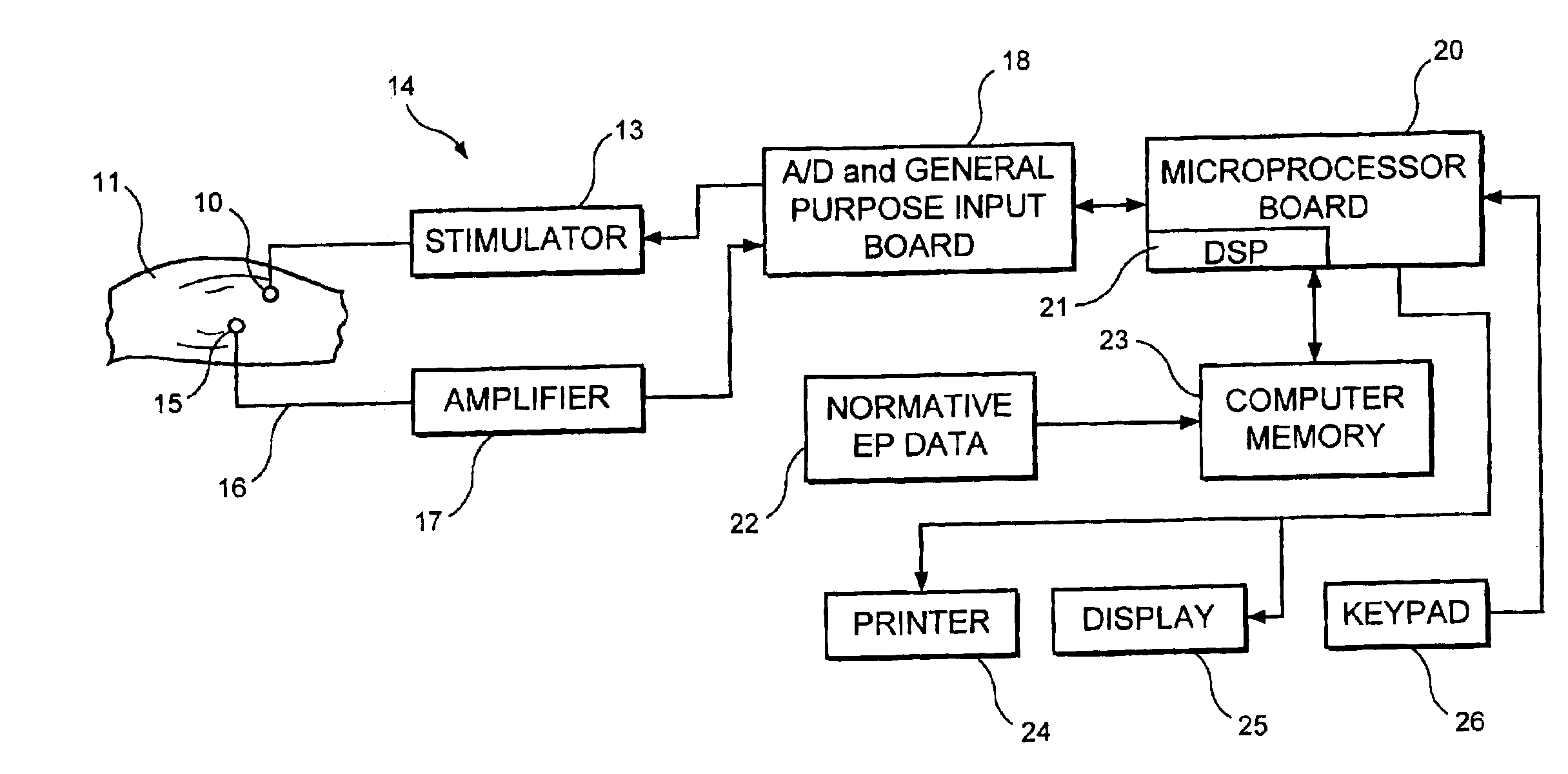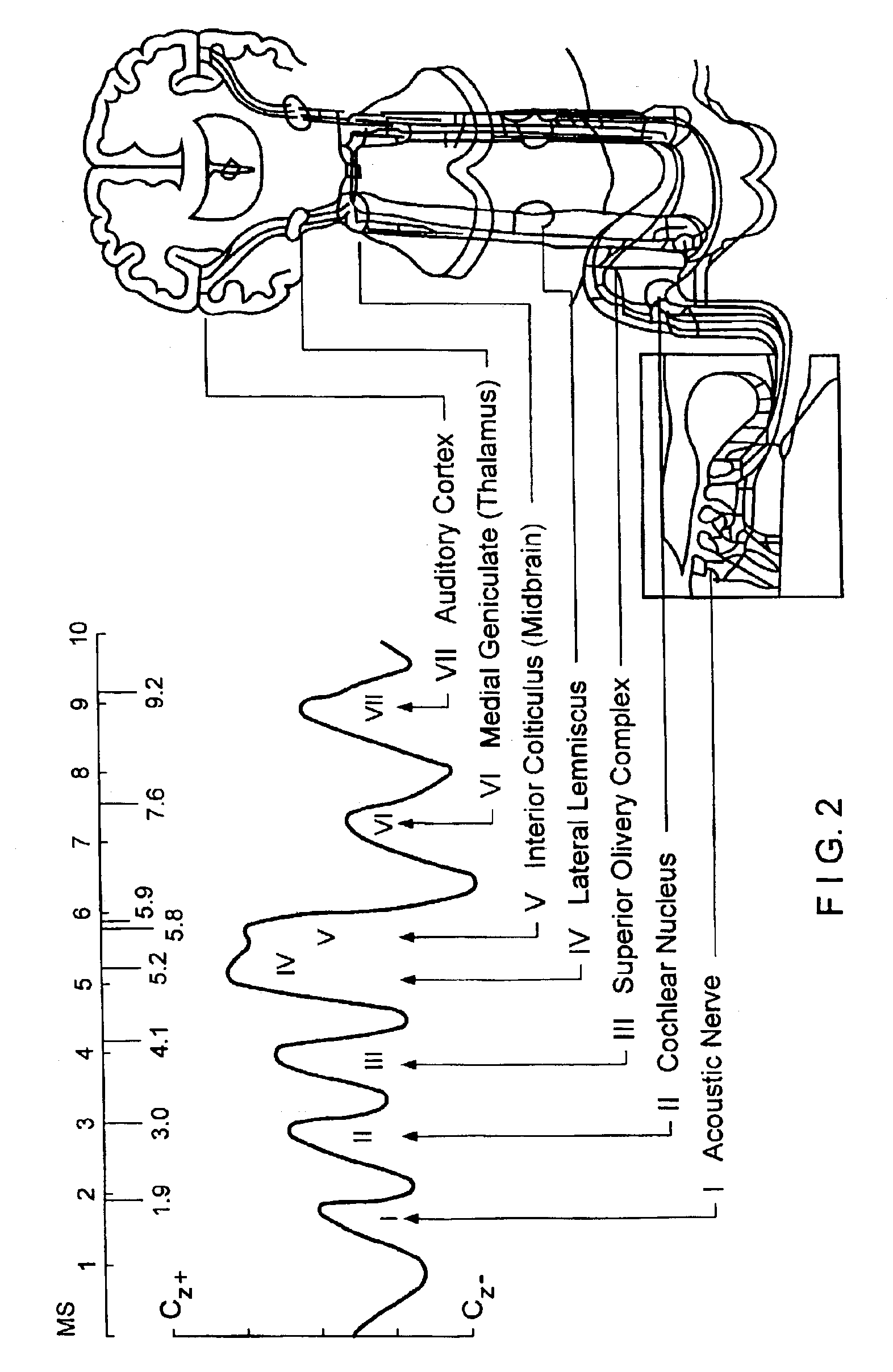System and method for fetal brain monitoring
a brain monitoring and fetal technology, applied in the field of medical obstetric procedures and devices, can solve the problems of difficult to obtain meaningful brainwaves from fetuses, and achieve the effect of improving the signal to noise ratio of digital data
- Summary
- Abstract
- Description
- Claims
- Application Information
AI Technical Summary
Benefits of technology
Problems solved by technology
Method used
Image
Examples
Embodiment Construction
[0012]In accordance with the present invention, the brain waves of a fetus are detected using non-invasive means and analyzed using a Fetal Brain Monitor (“FBM”). This is a very difficult procedure and requires highly sophisticated techniques and sensitive equipment. However, the evaluation of fetal brain waves may permit the assessment of conditions which may lead to abnormal or delayed intrauterine development and provide a standard for normal fetal development. Those skilled in the art will understand that, while the invention is described in regard to the detection of brain waves from a human fetus, the same apparatus and methods may be applied to detect brain waves of other species.
[0013]FIG. 1 shows a Fetal Brain Monitor (“FMB”) 14, which is used to non-invasively obtain BAER data from a fetus in-utero. BAER data may be obtained from a fetus when it has developed sufficiently to hear and respond to auditory stimuli, which usually occurs when the fetus has become viable or in t...
PUM
 Login to View More
Login to View More Abstract
Description
Claims
Application Information
 Login to View More
Login to View More - R&D
- Intellectual Property
- Life Sciences
- Materials
- Tech Scout
- Unparalleled Data Quality
- Higher Quality Content
- 60% Fewer Hallucinations
Browse by: Latest US Patents, China's latest patents, Technical Efficacy Thesaurus, Application Domain, Technology Topic, Popular Technical Reports.
© 2025 PatSnap. All rights reserved.Legal|Privacy policy|Modern Slavery Act Transparency Statement|Sitemap|About US| Contact US: help@patsnap.com



